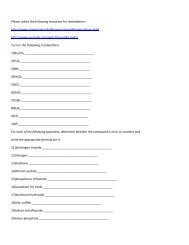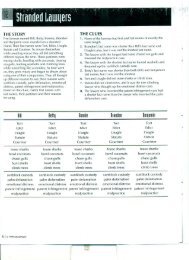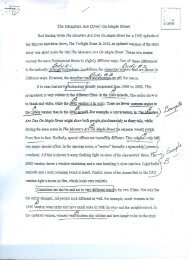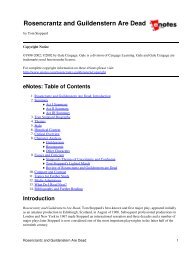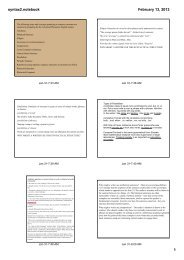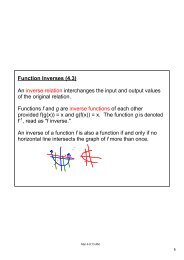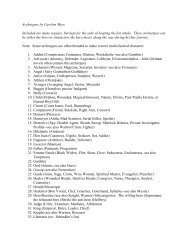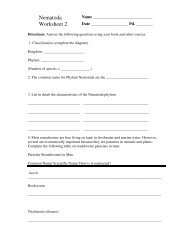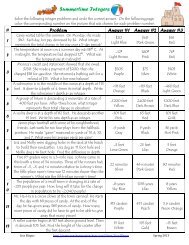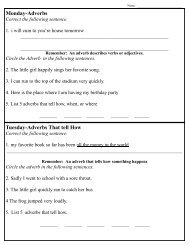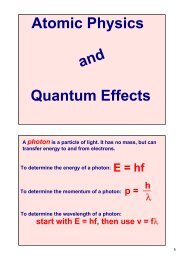Create successful ePaper yourself
Turn your PDF publications into a flip-book with our unique Google optimized e-Paper software.
Name Date Class<br />
2<br />
58 Properties of Fluids<br />
<strong>Study</strong> Guide<br />
Properties of Fluids<br />
Directions: Determine whether the italicized term makes each statement true or false. If the statement is true,<br />
write true in the blank. If the statement is incorrect, write in the blank the term that makes the statement true.<br />
1. A fluid is a liquid or a solid.<br />
2. Buoyancy is the ability of a fluid to exert a downward force on<br />
an object immersed in it.<br />
3. If the buoyant force on an object is greater than the weight of<br />
the object, the object will sink.<br />
4. The buoyant force on an object in a fluid is equal to the weight<br />
of the fluid displaced by the object.<br />
5. Archimedes’ principle states that pressure applied to a fluid is<br />
transmitted unchanged throughout the fluid.<br />
6. As the velocity of a fluid increases, the pressure exerted by the<br />
fluid increases.<br />
7. Temperature and viscosity are inversely related; that is, higher<br />
temperature means lower viscosity.<br />
Directions: Answer the following questions on the lines provided.<br />
8. A hydraulic machine can be used to lift extremely heavy objects. Why is the fluid in the<br />
hydraulic machine a liquid rather than a gas?<br />
Chapter<br />
16<br />
9. A block of wood is floating in water. The weight of the part of the block above water is onethird<br />
of the total weight of the block. What is the weight of the water displaced by the block<br />
of wood? Explain your answer in terms of Archimedes’ principle.<br />
10. A passenger jet in the air increases its speed. Does the downward force of air on the top of<br />
the wings increase or decrease? Does the net lifting force of the air on the wings increase or<br />
decrease? Explain your answer.<br />
Copyright © Glencoe/McGraw-Hill, a division of the McGraw-Hill Companies, Inc.




